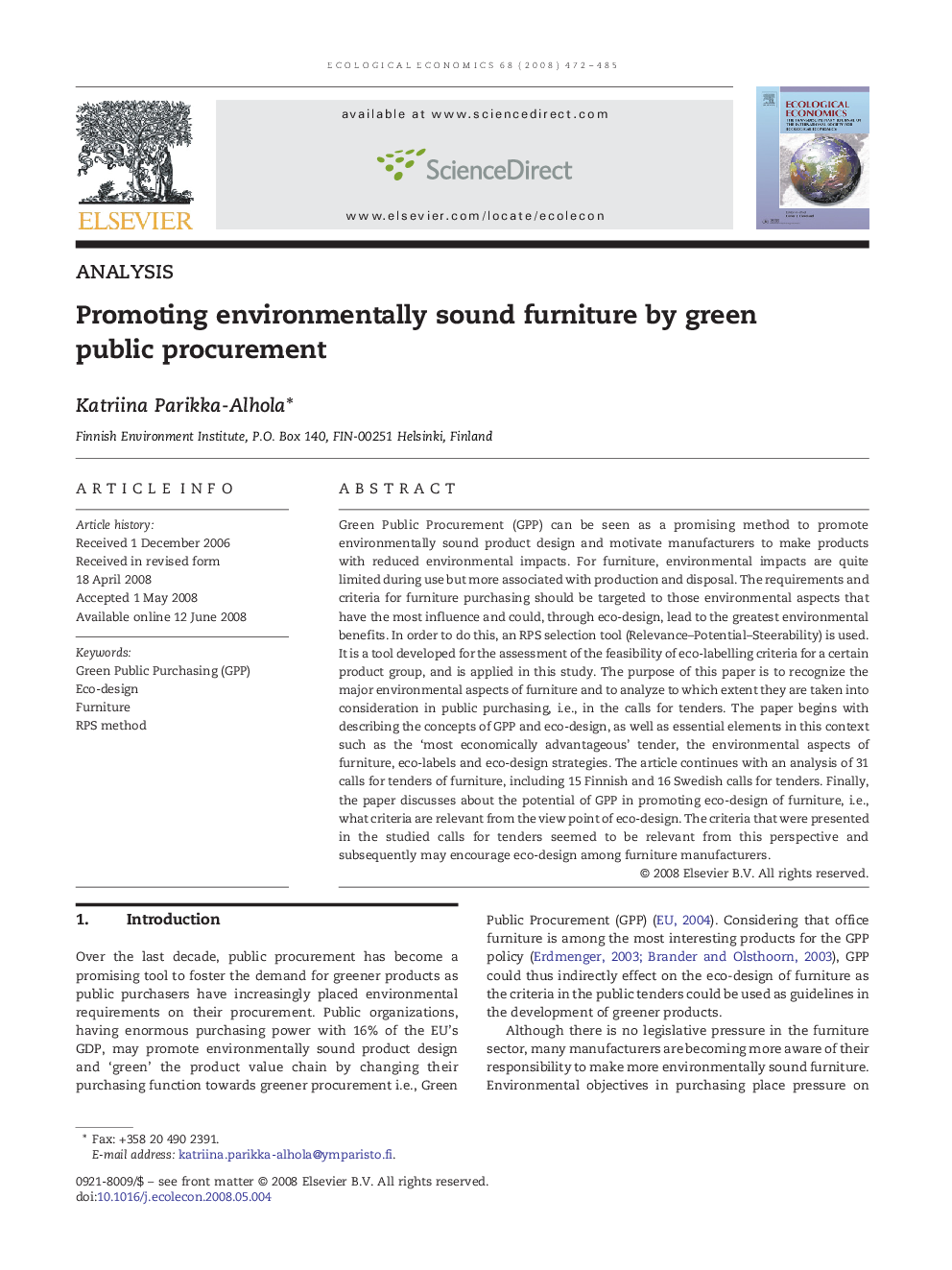| Article ID | Journal | Published Year | Pages | File Type |
|---|---|---|---|---|
| 5051707 | Ecological Economics | 2008 | 14 Pages |
Abstract
Green Public Procurement (GPP) can be seen as a promising method to promote environmentally sound product design and motivate manufacturers to make products with reduced environmental impacts. For furniture, environmental impacts are quite limited during use but more associated with production and disposal. The requirements and criteria for furniture purchasing should be targeted to those environmental aspects that have the most influence and could, through eco-design, lead to the greatest environmental benefits. In order to do this, an RPS selection tool (Relevance-Potential-Steerability) is used. It is a tool developed for the assessment of the feasibility of eco-labelling criteria for a certain product group, and is applied in this study. The purpose of this paper is to recognize the major environmental aspects of furniture and to analyze to which extent they are taken into consideration in public purchasing, i.e., in the calls for tenders. The paper begins with describing the concepts of GPP and eco-design, as well as essential elements in this context such as the 'most economically advantageous' tender, the environmental aspects of furniture, eco-labels and eco-design strategies. The article continues with an analysis of 31 calls for tenders of furniture, including 15 Finnish and 16 Swedish calls for tenders. Finally, the paper discusses about the potential of GPP in promoting eco-design of furniture, i.e., what criteria are relevant from the view point of eco-design. The criteria that were presented in the studied calls for tenders seemed to be relevant from this perspective and subsequently may encourage eco-design among furniture manufacturers.
Keywords
Related Topics
Life Sciences
Agricultural and Biological Sciences
Ecology, Evolution, Behavior and Systematics
Authors
Katriina Parikka-Alhola,
